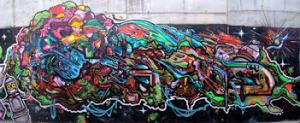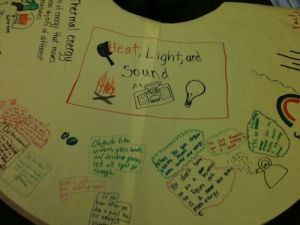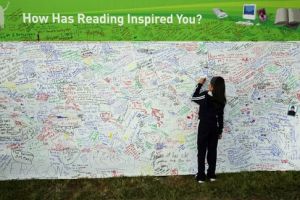I have been researching strategies to use to ensure more of my children actively take part in their learning. My aim is for me to do less and the pupils to do more – try reading ‘The Lazy Teacher’s Handbook’ for some brilliant ideas – it doesn’t mean cut corners it just means that the individuals have to be participants…not empty vessels ready to fill with knowledge.
My school has invested a lot of time training in the use of Kagan strategies. This way of seating pupils ensures that independence is developed and more active learning is unavoidable.
However, I was after some quick wins…and that was when I kept stumbling across graffiti!
I first tried to use this approach in maths lessons (graffiti maths) and it was fantastic (I even had an outstanding lessons obs…in maths!!!). It is really simple. I covered every table with sugar paper and provided each group with marker pens. As a table they had problems to solve and everyone had to be able to explain how they solved it before moving on to the next question. In this way the children coached each other so mixed ability groups work well. I also ran it as a competition and moved chairs so everyone shifted around the table scribbling their working out on the large paper. It is really easy to step back and see who is understanding what and where there are misconceptions which can be instantly addressed. The mathematical conversations that the children had were joyful to listen to.
http://clairelotriet.com/blog/2012/12/15/graffiti-maths/
You can also use graffiti walls in maths sessions…
Moving swiftly onto graffiti for literacy….
Divide children into groups of four – divide your large piece of paper into the same number. Write the topic in the centre. Using felt pens or markers children write or draw their ideas and thoughts in their section. After a limited amount of time, as a group, they move to the next table, take a section each and add their thoughts and feelings. Once all table / groups have been visited share key points / ideas. Through this approach all children participate and share their views.
Next we have graffiti walls. A large piece of paper can be stuck to the wall with a word, an image or a quote at its centre. Each group of children is given five minutes to add their thoughts to the large piece of paper. This gives the class a starting point for discussions, but it can be used as an assessment tool so you know what the children know which can inform your planning. You can use more than one big piece of paper around the room – perhaps have different characters on each sheet, or different book covers for prediction or comparison.
Then there are graffiti tables – you could cover a small table with tacky-back so it is wipe clean or just cover with sugar paper. It could be used as a focus group activity in response to something you have read or to collect descriptive vocabulary for a scene or character.
Try it. It solves the problem of passive pupils, low motivation and independence. I would love to hear any of your ideas and successes.









